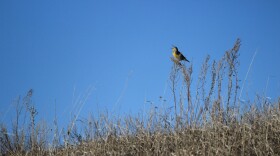We had a new moon earlier this week, on April 20. So, with the darkened night sky, it is a good time to do some stargazing. Plus, we have the Lyrids Meteor Shower running through April 25.
The Lyrids are considered an average meteor shower. The peak viewing period is expected to occur on the evening of April 22 and early morning hours of April 23 with perhaps 20 meteors per hour. There will be a crescent moon which will set early that night, so if the sky is clear, it could make for some great viewing.
As with other meteor showers, the Lyrids are so named because the meteors seem to originate out of the constellation Lyra (The Lyre). If you are up for some stargazing, the constellation Lyra should be visible in the northeast sky by around 10:00pm.
The Lyrids have the reputation for providing long trails which may last for several seconds. They are also known for their occasional outbursts which may produce over 100 meteors an hour. The reason for these outbursts is unknown, but with a potentially impressive show like that, it is well worth checking out.
The Lyrids are caused by material from Comet Thatcher. You may recall that comets are mixtures of ice, rock, and dust -- think of them as dirty snowballs that are a few miles in diameter. When comets pass near the sun, the heat causes the comets to shed ice and particles. These mostly sand-sized pieces of ice and rock create a “debris field” in outer space. When the earth passes through these debris fields, the pieces collide with the atmosphere and become glowing hot. Viewed from earth, they are “falling stars,” or more accurately, meteors.
The next meteor shower, the Eta Aquarids Meteor Shower caused by Halley’s Comet, runs from April 19 to May 28. It is considered an above-average meteor shower with around 30 meteors or more per hour during the peak viewing period, which will be on the evening of May 6 and early hours of May 7. However, there will be some interference with a near full moon at that time.
So, if the evening sky is clear over the next few weeks, make a point of watching for the Lyrids and Eta Aquarids Meteor Showers. And while you are out there, do a little stargazing.
Further Reading




